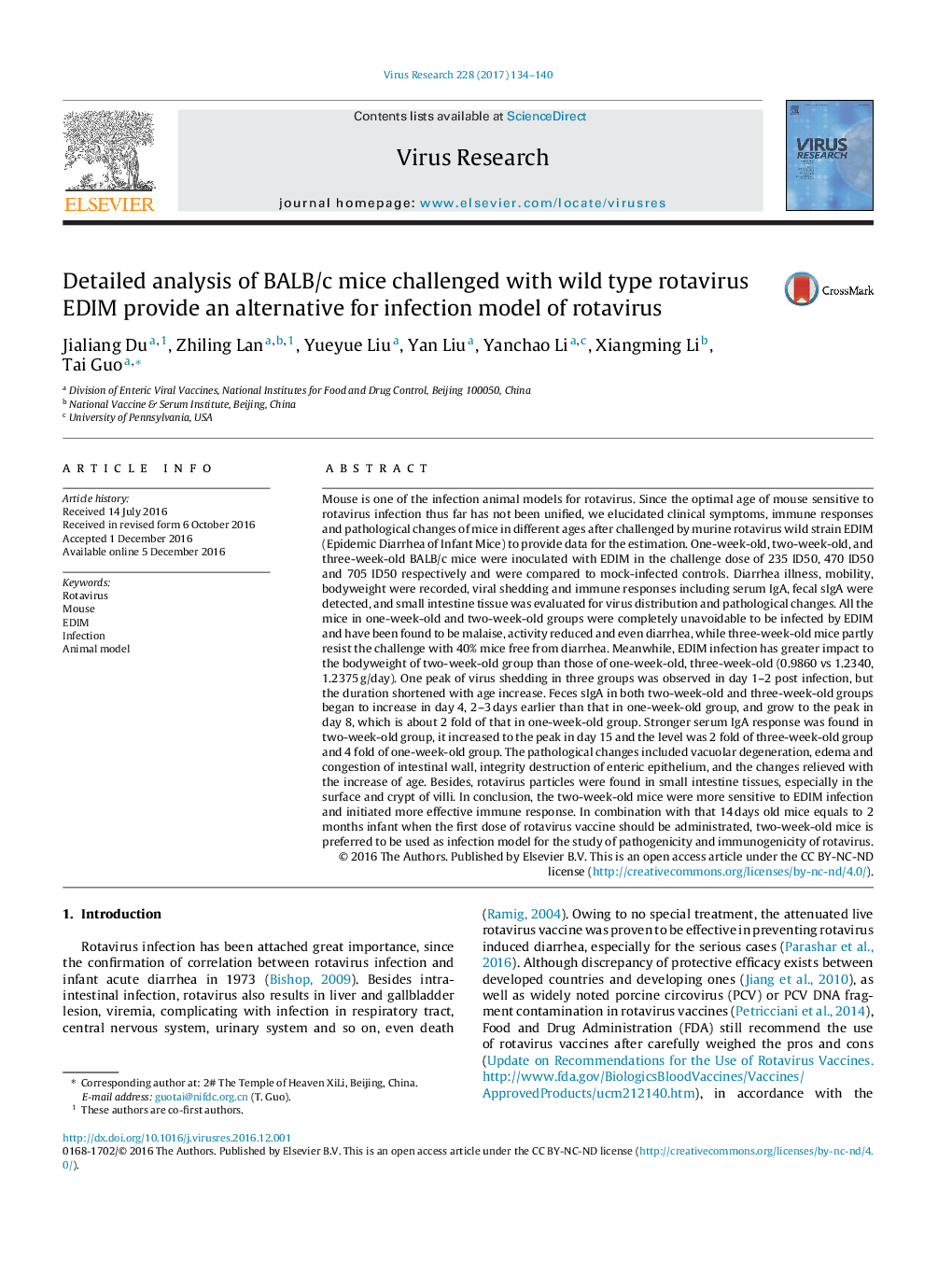| Article ID | Journal | Published Year | Pages | File Type |
|---|---|---|---|---|
| 5675444 | Virus Research | 2017 | 7 Pages |
Abstract
Mouse is one of the infection animal models for rotavirus. Since the optimal age of mouse sensitive to rotavirus infection thus far has not been unified, we elucidated clinical symptoms, immune responses and pathological changes of mice in different ages after challenged by murine rotavirus wild strain EDIM (Epidemic Diarrhea of Infant Mice) to provide data for the estimation. One-week-old, two-week-old, and three-week-old BALB/c mice were inoculated with EDIM in the challenge dose of 235 ID50, 470 ID50 and 705 ID50 respectively and were compared to mock-infected controls. Diarrhea illness, mobility, bodyweight were recorded, viral shedding and immune responses including serum IgA, fecal sIgA were detected, and small intestine tissue was evaluated for virus distribution and pathological changes. All the mice in one-week-old and two-week-old groups were completely unavoidable to be infected by EDIM and have been found to be malaise, activity reduced and even diarrhea, while three-week-old mice partly resist the challenge with 40% mice free from diarrhea. Meanwhile, EDIM infection has greater impact to the bodyweight of two-week-old group than those of one-week-old, three-week-old (0.9860 vs 1.2340, 1.2375Â g/day). One peak of virus shedding in three groups was observed in day 1-2 post infection, but the duration shortened with age increase. Feces sIgA in both two-week-old and three-week-old groups began to increase in day 4, 2-3Â days earlier than that in one-week-old group, and grow to the peak in day 8, which is about 2 fold of that in one-week-old group. Stronger serum IgA response was found in two-week-old group, it increased to the peak in day 15 and the level was 2 fold of three-week-old group and 4 fold of one-week-old group. The pathological changes included vacuolar degeneration, edema and congestion of intestinal wall, integrity destruction of enteric epithelium, and the changes relieved with the increase of age. Besides, rotavirus particles were found in small intestine tissues, especially in the surface and crypt of villi. In conclusion, the two-week-old mice were more sensitive to EDIM infection and initiated more effective immune response. In combination with that 14Â days old mice equals to 2 months infant when the first dose of rotavirus vaccine should be administrated, two-week-old mice is preferred to be used as infection model for the study of pathogenicity and immunogenicity of rotavirus.
Keywords
Related Topics
Life Sciences
Immunology and Microbiology
Virology
Authors
Jialiang Du, Zhiling Lan, Yueyue Liu, Yan Liu, Yanchao Li, Xiangming Li, Tai Guo,
